ISO 9001:2015 Clause 8.2.3 & 8.2.4: Review and Changes to Requirements for Products and Services
Introduction
Documenting review results and new requirements is essential for maintaining clarity, traceability, and accountability within a quality management system. Clear documentation ensures that all stakeholders have a shared understanding of expectations, helping to prevent misunderstandings, errors, and delays. This transparency is key to achieving consistent product and service quality and meeting customer demands effectively.
Equally important is managing changes to product or service requirements. Effective change management allows organizations to adapt to evolving customer needs, regulatory updates, and internal improvements, minimizing risks and avoiding costly rework.
For expert ISO 9001 consulting and hassle-free certification, trust Maxicert to help your business align with international standards and achieve sustainable growth.

8.2.3 Review of the Requirements for Products and Services
8.2.3.1 Ability to Meet Requirements
The organization shall ensure that it has the ability to meet the requirements for products and services to be offered to customers. The organization shall conduct a review before committing to supply products and services to a customer, to include:
- requirements specified by the customer, including the requirements for delivery and post-delivery activities.
- requirements not stated by the customer, but necessary for the specified or intended use, when known.
- requirements specified by the organization.
- statutory and regulatory requirements applicable to the products and services.
- contract or order requirements differing from those previously expressed.
The organization shall ensure that contract or order requirements differing from those previously defined are resolved.
The customer’s requirements shall be confirmed by the organization before acceptance, when the customer does not provide a documented statement of their requirements.
NOTE: In some situations, such as internet sales, a formal review is impractical for each order. Instead, the review can cover relevant product information, such as catalogues.
8.2.3.2 Documentation Requirements
The organization shall retain documented information, as applicable:
- on the results of the review.
- on any new requirements for the products and services.
- on the authorization of design and development changes.
- on actions taken to prevent adverse impacts from changes.
ISO 9001:2015 Clause Guide Panel
- Clause 1
- Clause 2
- Clause 3
- Clause 4 – Sub-clause 1
- Clause 4 – Sub-clause 2
- Clause 5 – Sub-clause 1
- Clause 5 – Sub-clause 2
- Clause 5 – Sub-clause 3
- Clause 6 – Sub-clause 1
- Clause 6 – Sub-clause 2
- Clause 7 – Sub-clause 1
- Clause 7 – Sub-clause 2
- Clause 7 – Sub-clause 3
- Clause 7 – Sub-clause 4
- Clause 8 – Sub-clause 1
- Clause 8 – Sub-clause 2
- Clause 8 – Sub-clause 3
- Clause 8 – Sub-clause 4
- Clause 8 – Sub-clause 5
- Clause 8 – Sub-clause 6
- Clause 8 – Sub-clause 7
- Clause 8 – Sub-clause 8
- Clause 8 – Sub-clause 9
- Clause 8 – Sub-clause 10
- Clause 8 – Sub-clause 11
- Clause 8 – Sub-clause 12
- Clause 9 – Sub-clause 1
- Clause 9 – Sub-clause 2
- Clause 9 – Sub-clause 3
- Clause 9 – Sub-clause 4
- Clause 10
Additional Guidance and Considerations
A requirement for product and service might be specified or not specified by the customer, regardless of that, it is up to the organization to be sure that all requirements will be fulfilled.
When the customer does not express a requirement in documented information, the Organization needs to be sure that what the customer actually needs has been clearly understood, by the organization and, as appropriate, by the customer itself, therefore the organization shall confirm to the customer its requirements.
Although the clause does not request the organization to retain documented information of that confirmation, evidence of it should be made available as necessary.
Typical Checks in Requirements Review
Some of the things the Organization might check for are:
- availability of parts or raw materials,
- current equipment capacity,
- conditions of payment,
- if the product can be delivered by the customer’s due date,
- unspecified customer expectations or post-delivery activities,
- if there are any externally provided processes that need to be considered in the schedule (see also 8.4).
Requirements should refer to the entire product and service lifecycle, as applicable, to ensure customer satisfaction (ref. clause 9.1.2).
All parts of a customer’s order or contract need to be reviewed to ensure that they can be met.
Role of Interested Parties
Needs and expectations of relevant interested parties, other than the customer, might be crucial to satisfy the customer. Consequently, the Organization might need to address these needs and expectations (including, as applicable, sustainability issues), as arising from the context analysis.
Example:
A customer might discriminate between two products or services with the same performances and prefer the one with less environmental impact. In this case, addressing expectations of the community and regulatory bodies is a condition for customer satisfaction.
Methods and Conditions for Conducting the Review
There might be many ways for conducting the requirements review; it depends on several conditions, including:
Complexity
The complexity of the organization plays a key role in determining processes.
Industry Sector
The industrial sector influences requirements and quality expectations.
Risks & Criticalities
Consider the risks and criticalities related to products and services.
Legal & Regulatory
Compliance with legal and regulatory requirements tied to customer agreements.
Interested Parties
Identify all interested parties involved in the process.
Cultural Issues
Consider internal and external cultural factors that affect communication and delivery.
Customer Interface
Manage the interface with customers and related technologies, such as online transactions.
Process Repetition
The repetitiveness of the process determines monitoring needs and efficiency.
Review Process Scenarios
In complex situations, the review process might imply:
- the use of detailed checklists,
- the involvement of all relevant functions in the organization and of external experts, if necessary,
- the involvement of the customer,
- the involvement of other relevant interested parties, etc.
In simpler situations, the review could be done quickly and automatically, and evidence of its affirmative result could be provided by signing the order or contract.
It is up to the organization to decide how to conduct and document the review process; nevertheless, the organization should be able to justify its decisions, as necessary.
Retention of Documented Information
Subclause 8.2.3.2 states that documented information describing the results of the review, including any new or changed requirements for the products and services, shall be retained.
The Organization is not requested to retain detailed documented information about the requirements itself and its changes, if any, as determined and reviewed by the Organization. Consequently, it is up to the Organization to decide the details of records to be provided.
These decisions should consider:
- organizational and external conditions, including the complexity of the process and the related risks,
- expectations of the customer and of other relevant interested parties, as applicable, including the necessity to provide evidence to internal and external parties.
8.2.4 Changes to Requirements for Products and Services
The organization shall ensure that relevant documented information is amended, and that relevant persons are made aware of the changed requirements when the requirements for products and services are changed.
There is the risk that a requirement previously determined by the organization is changed in progress by the customer or because of changes in the context, etc.
In these cases, the organization shall timely identify the impacts on the process and consequently update any element of the process that is affected by the change to:
- ensure the integrity of the process,
- avoid misunderstanding,
- confirm its ability to meet the defined requirements, including the new or changed ones,
- ensure the conformity of the products and services, and customer satisfaction.
Relation to Other QMS Elements
This refers to any involved element of the QMS, including:
- documented information (Clause 7.5 – Documented Information),
- people’s awareness (Clause 7.3 – Awareness),
- operational planning (8.1 Operational planning and control),
- competencies needed (7.2 Competence),
- external and internal communication (7.4 – Communication).
Conclusion
Mastering ISO 9001:2015 clauses 8.2.3 and 8.2.4 is more than just a box-ticking exercise, it’s a fundamental business practice that protects your company and delights your customers. By carefully reviewing all requirements before you commit and effectively managing any changes that come your way, you build a foundation of trust and reliability. This proactive approach not only ensures you can deliver on your promises but also helps you avoid costly mistakes and misunderstandings. Ultimately, a strong grasp of these clauses is a key ingredient for achieving lasting customer satisfaction and a robust, resilient quality management system.
Ready to elevate your quality management? Partner with Maxicert for expert guidance and seamless ISO 9001 certification, start building trust and success today.
Free 60–90 day implementation plan available after consultation.
FAQ
Why is reviewing requirements important in ISO 9001 Clause 8.2.3?
It ensures your organization can meet customer and regulatory needs before committing, reducing errors and delays.
How should changes to requirements be managed as per Clause 8.2.4?
Organizations must update documents and inform relevant staff promptly to avoid miscommunication and maintain quality.
What role does documentation play in managing reviews and changes?
Documentation provides proof of compliance, supports traceability, and aids continuous improvement and audits.
How can Maxicert help with Clauses 8.2.3 and 8.2.4?
Maxicert offers expert guidance and certification to help businesses implement effective review and change management processes.
Client Testimonials
What Our Clients Say About Us?
We are trusted by thousands of clients belonging from technology, manufacturing, healthcare and various sectors
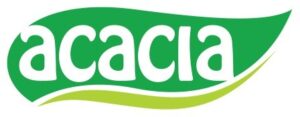

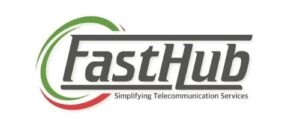

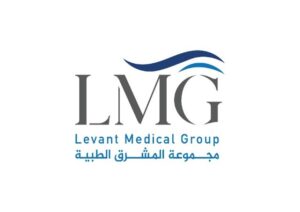


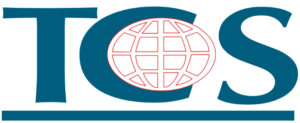
Our overall experience with Maxicert was satisfied. The audit and consulting part was handled carefully, we fulfilled our client requirement of ISO 27001 hassle free.
Kevin Santiago BDM – Clarks Outsourcing, PhilippinesTimely response and knowledge of ISO standards can be seen together in the team of Maxicert, we grow because of the service providers like Maxicert.
Samuel Christopher Quality Assurance Head – OEQA, NigeriaWe did Food safety certification with Maxicert, the service was extraordinary and their consultant had good experience of the subject.
Mr. Venkatesh Production Manager - Acacia Foods and Beverages, ZambiaWe engaged a consultant of Maxicert for our business certification, we now have a well-designed and organized department procedures and we rectify our errors through internal audits regularly.
Abdullah Al Rayes Managing Director – TCS, BahrainTechnical expertise by the team of Maxicert helped us achieving our ISO 13485 certificates, we now proudly say that we have achieved our target, all thanks to the team.
Nady Boustany CEO – LMG, IraqMaxiCert's approach to meet our needs proved instrumental in facilitating a seamless transition throughout the entire ISO certification process for us. Their training sessions are so much helpful.
Ms. Latifa Al Salem Investor portfolio – Ministry of Investment, Saudi ArabiaMaxicert is a one stop solution, we got trainings, documents, audit and certification at one place, they facilitated everything.
Ms. Mariam Chaggama VP – Fasthub, Tanzania

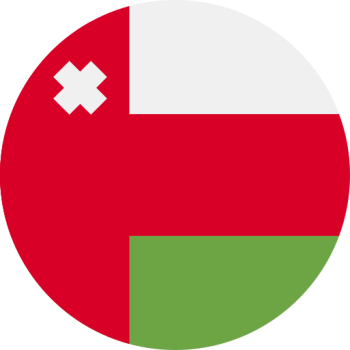



Their presence in Oman made us even better to accomplish our goal of achieving ISO certificates on time, we will definitely recommend their services.
Mr. Sailesh Mohanakrishnan Division Manager – Khimji Ramdas, Oman